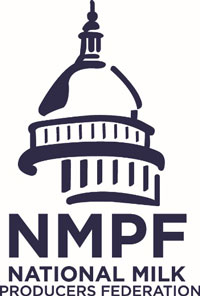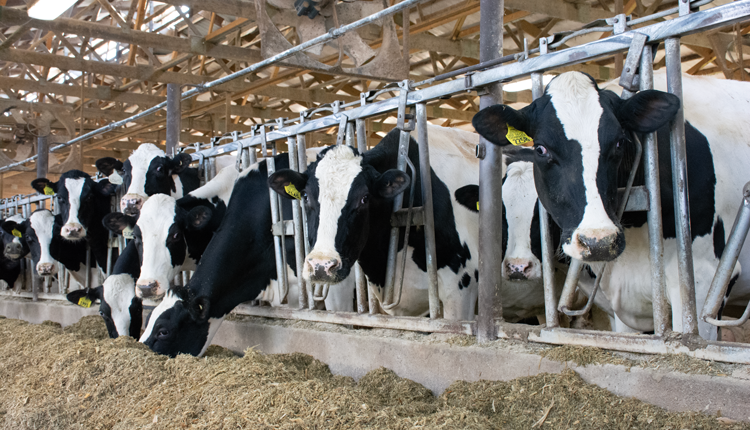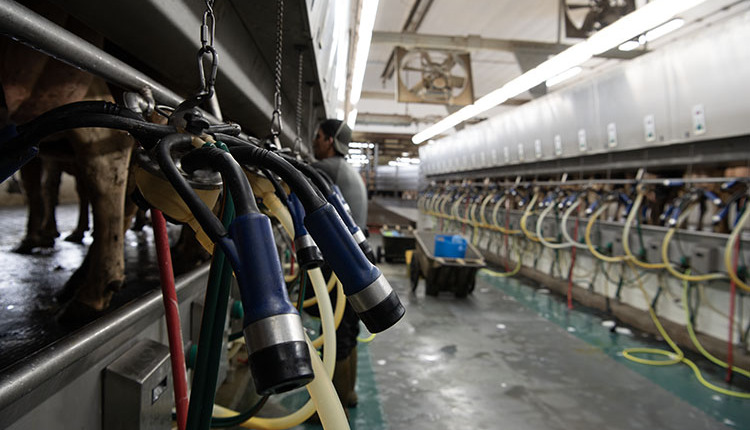by Amanda Smith, Associate Editor
 Once again, a National Milk Producers Federation proposal to bring the U.S. somatic cell count legal limit in line with regulations long adopted by those wishing to produce milk in New Zealand, Australia and Europe was trumped on April 24, 2013. When it comes to milk quality, this decision puts the U.S. behind the curve.
Once again, a National Milk Producers Federation proposal to bring the U.S. somatic cell count legal limit in line with regulations long adopted by those wishing to produce milk in New Zealand, Australia and Europe was trumped on April 24, 2013. When it comes to milk quality, this decision puts the U.S. behind the curve.
In the end, the proposal to lower the SCC legal limit for Grade A milk to 400,000 was defeated by a much greater margin than 2011's one vote split. Of the delegates in attendance, 22 were for lowering the limit, 28 voted against the proposal and one abstained. NCIMS will not meet again for another two years.
Delegates had previously defeated a proposal to reduce the somatic cell count (SCC) legal limit from 750,000 cells per milliliter of milk to 400,000 by 2014 with a vote of 26 opposed to 25 in favor, two years ago, at the 2011 National Conference on Interstate Milk Shipments.
The NCIMS meets biannually to discuss points in the Pasteurized Milk Ordinance (PMO) that serve as the basis for inspections and quality control for dairy farms and dairy plants that handle Grade A milk. Action taken by NCIMS is advisory to the FDA which is responsible for inspections and milk safety.
The current upper legal limit of 750,000 has been in place for the past 10 years, since 1993. Under the PMO, milk from each dairy farm must be tested for SCC at least four times every six months. Most plants will test every tanker load coming off farm. If a farm had two samples out of four that are over the 750,000 limit, it receives a notice. If a farm has three samples out of five that are over the limit, it gets degraded and no longer can sell Grade A milk. Before 1993, the legal limit was 1 million cells. Before 1986, it was 1.5 million.
For many U.S. producers, whose milk is turned into products destined for European consumption, a 400,000 SCC limit already exists. This regulation applies to each individual farm, not just the average of a group of farms. Recently, the U.S. has exported the equivalent of over 13 percent of its milk production.
Proposals to lower the SCC limit to 400,000 have been submitted multiple times. The proposals primarily have been rejected on the basis that SCCs/mastitis constituted an animal health issue, not a human health or milk safety issue.
Idaho and Oregon adopted stricter limits in 2012, moving to 400,000 and 500,000, respectively. California has had a long established limit of 600,000. The rest of the nation needs to adopt Idaho's forward thinking ideals.

 Once again, a National Milk Producers Federation proposal to bring the U.S. somatic cell count legal limit in line with regulations long adopted by those wishing to produce milk in New Zealand, Australia and Europe was trumped on April 24, 2013. When it comes to milk quality, this decision puts the U.S. behind the curve.
Once again, a National Milk Producers Federation proposal to bring the U.S. somatic cell count legal limit in line with regulations long adopted by those wishing to produce milk in New Zealand, Australia and Europe was trumped on April 24, 2013. When it comes to milk quality, this decision puts the U.S. behind the curve.In the end, the proposal to lower the SCC legal limit for Grade A milk to 400,000 was defeated by a much greater margin than 2011's one vote split. Of the delegates in attendance, 22 were for lowering the limit, 28 voted against the proposal and one abstained. NCIMS will not meet again for another two years.
Delegates had previously defeated a proposal to reduce the somatic cell count (SCC) legal limit from 750,000 cells per milliliter of milk to 400,000 by 2014 with a vote of 26 opposed to 25 in favor, two years ago, at the 2011 National Conference on Interstate Milk Shipments.
The NCIMS meets biannually to discuss points in the Pasteurized Milk Ordinance (PMO) that serve as the basis for inspections and quality control for dairy farms and dairy plants that handle Grade A milk. Action taken by NCIMS is advisory to the FDA which is responsible for inspections and milk safety.
The current upper legal limit of 750,000 has been in place for the past 10 years, since 1993. Under the PMO, milk from each dairy farm must be tested for SCC at least four times every six months. Most plants will test every tanker load coming off farm. If a farm had two samples out of four that are over the 750,000 limit, it receives a notice. If a farm has three samples out of five that are over the limit, it gets degraded and no longer can sell Grade A milk. Before 1993, the legal limit was 1 million cells. Before 1986, it was 1.5 million.
For many U.S. producers, whose milk is turned into products destined for European consumption, a 400,000 SCC limit already exists. This regulation applies to each individual farm, not just the average of a group of farms. Recently, the U.S. has exported the equivalent of over 13 percent of its milk production.
Proposals to lower the SCC limit to 400,000 have been submitted multiple times. The proposals primarily have been rejected on the basis that SCCs/mastitis constituted an animal health issue, not a human health or milk safety issue.
Idaho and Oregon adopted stricter limits in 2012, moving to 400,000 and 500,000, respectively. California has had a long established limit of 600,000. The rest of the nation needs to adopt Idaho's forward thinking ideals.












